7 most modern spacecraft on the planet
Recently, astronomers have provided clear evidence of a "second Earth" planet orbiting Proxima Centauri - the star closest to the Sun - a "strange" planet that was recently discovered.
Although the star system is our cosmic “neighbor”, the distance from our Earth to it is about 4.2 light years or 25 trillion miles. With this distance, is it possible for us to travel to this “newly discovered” planet?
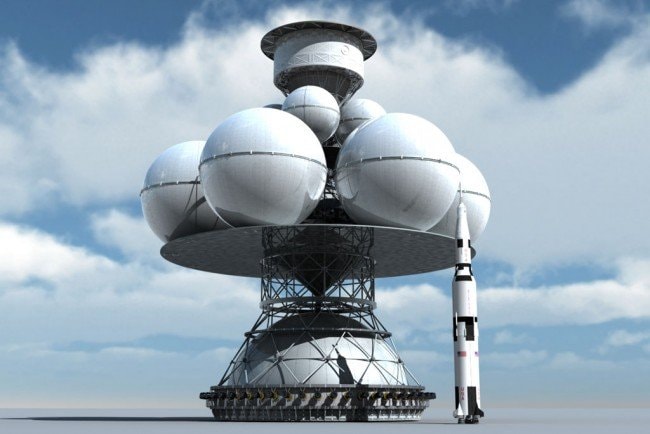 |
| The giant Project Daedalus fusion rocket paired with NASA's Saturn V rocket. |
But if we want to make a trip outside the Solar System, we'll need spacecraft that go a little faster - like NASA's giant Project Daedalus fusion rocket paired with a Saturn V rocket - like the one in the illustration above created by graphic engineer and space artist Adrian Mann, whose job is to show what future space technology might look like.
Here are seven ways robots or even human explorers could reach the Proxima Centauri star system or other nearby cosmic regions.
1. Daedalus Spaceship
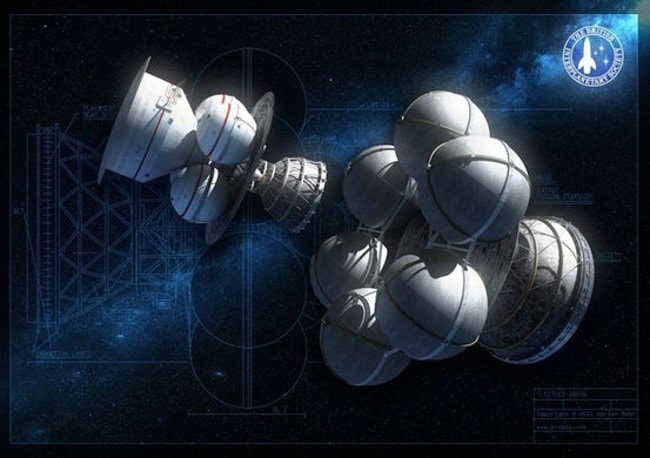 |
| The five-year project resulted in the design of the Daedalus spacecraft. (Photo credit: Adrian Mann). |
The five-year project has come up with the Daedalus spacecraft design - a two-stage, 54,000-ton nuclear rocket that would increase the speed of light by about 12 percent compared to the 400-ton robotic probe. This would make the probe's six-light-year journey to Barnard's star about 50 years.
The Daedalus spacecraft's rockets are powered by nuclear fusion and use electron beams to detonate projectiles fueled with helium-3, which can be mined from the surface of the Moon. Even the engines would burn tens of thousands of tons of fuel to keep the spacecraft flying at full speed for four years, because there's no fuel reserve. The end result is a 50-year trip that would take just 70 hours of spacecraft flight to reach the "target" system, before the spacecraft reaches interstellar speed.
"The Daedalus spacecraft is too large to launch from the Earth's surface, so it will be built in orbit - meaning it cannot be built without the scale of space construction that currently does not exist," said Ian Crawford, professor of planetary science and astrobiology at Birkbeck College in the UK.
Professor Crawford said the science behind the Daedalus concept is easier to understand now than when the spacecraft was designed. "The cost and engineering challenges are huge - meaning it would take more than 100 years to build something like Daedalus out in the stars," he said.
2. Icarus Spaceship
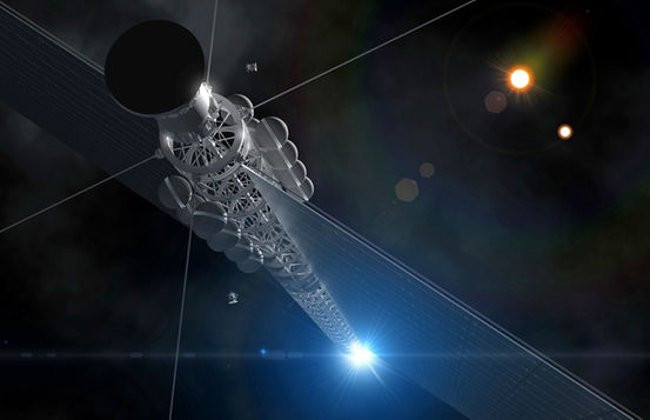 |
| The Icarus spacecraft is designed to head to any star within about 22 light-years of Earth. (Image credit: Adrian Mann). |
The Icarus spacecraft is designed to head to any star within 22 light years of Earth that is habitable, meaning if a planet is identified around Proxima Centauri it could be a desirable destination.
"The goal of Project Icarus is to update the Daedalus designs with some new ideas and new technologies," Crawford said. "One of the proposed improvements involves fusion rocket engines using different nuclear fuels detonated by photonic generators instead of electron beams - a technology that could draw from recent advances in laser ignition at the National Ignition Facility at Lawrence Livermore National Laboratory in California."
The Icarus probe is smaller than the proposed 400-tonne probe in the Daedalus spacecraft, thanks to advances in electronics miniaturisation - robotics and future nanotechnologies - meaning the spacecraft will carry less fuel but still be able to reach top speed.
3. Light-sail Spaceship
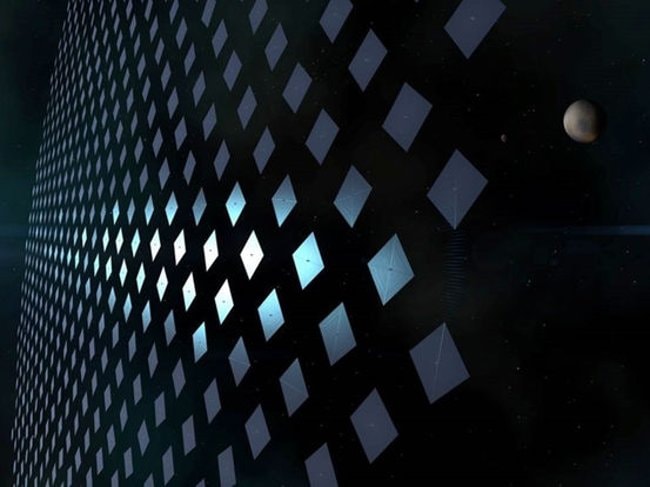 |
| The laser-guided light-sail spacecraft is the first step in the Breakthrough Starshot project. (Image credit: Adrian Mann). |
Although light sails powered by sunlight are an efficient way to explore the solar system, they are not fast enough to cover interstellar distances in a reasonable amount of time.
"The answer might be to use powerful lasers to push light sails at very high speeds along with the light beams at launch, until the spacecraft is too far away for the laser source to apply more force to the light beams," Crawford says.
Since the moving lasers could be built on Earth or in orbit, the interstellar light-sail spacecraft would no longer need to carry fuel on the journey. Therefore, the weight of the spacecraft could be kept to a minimum.
The laser-guided light-sail spacecraft is the first step in the Breakthrough Starshot project, a $100 million program announced this year by investor Yuri Milner and physicist Stephen Hawking. The project aims to build a working model by 2036, with a final mission costing around $10 billion.
The project envisages around 1,000 sticker-sized "StarChip" spacecraft - each weighing a few grams and attached to a "mothership" in orbit before being accelerated by lasers on the ground to speeds of around 15 to 20 percent the speed of light.
This would allow the spacecraft to make the four-light-year journey to the Alpha Centauri system – the triple star system that includes the host star Proxima Centauri and the habitable planet – in about 20 to 30 years.
The concepts behind the Breakthrough Starshot project were researched by Philip Lubin, a professor of cosmology at the University of California at Santa Barbara, who said: "The biggest remaining challenge is generating enough laser energy to be able to control a light-sail spacecraft."
4. Bussard ramjet spacecraft
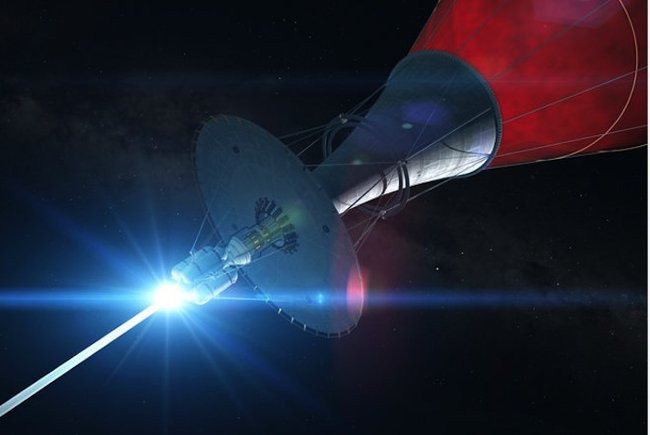 |
| The Bussard Ramjet spacecraft will create tiny traces of gas and dust found in interstellar space. (Image credit: Adrian Mann). |
Instead of carrying fuel, the Bussard Ramjet spacecraft will create tiny traces of gas and dust found in interstellar space, called the "Interstellar Medium," using a giant, funnel-shaped electromagnetic field that stretches thousands of miles in front of the spacecraft.
Hydrogen gas from the Interstellar Medium will be compressed and used as fuel in a fusion rocket located at the rear of the spacecraft to propel it forward.
Theoretically, a spacecraft driven by a Bussard Ramjet could continue to accelerate, as long as there was enough interstellar gas along the way to generate thrust and could reach a fraction of the speed of light.
As a result, the Bussard spacecraft has enjoyed a long and honored service in science fiction, notably in Larry Niven's "Known Space" series of novels and short stories, including the 1970 novel "Ringworld," and Poul Anderson's 1970 novel "Tau-Zero," in which an interstellar crew forces the Bussard spacecraft to suffer from relativistic speeds to avoid destruction.
Unfortunately, the Interstellar Medium orbiting our solar system and nearby stars is very small, and scientists have estimated that there won't be enough hydrogen gas to fuel a Bussard Ramjet spacecraft. "It's not galactic," Crawford says.
However, he explained: "Some proposed ideas to overcome the limitations include a concept known as the 'Ram Augmented Rocket Stellar', which collects reaction mass matter to be able to steer the spacecraft forward, using energy to illuminate with lasers, and an 'Interstellar Runway' that uses a sedimentary fuel layer located in front of the Bussard spacecraft's acceleration track."
5. Antimatter rockets & moving black holes
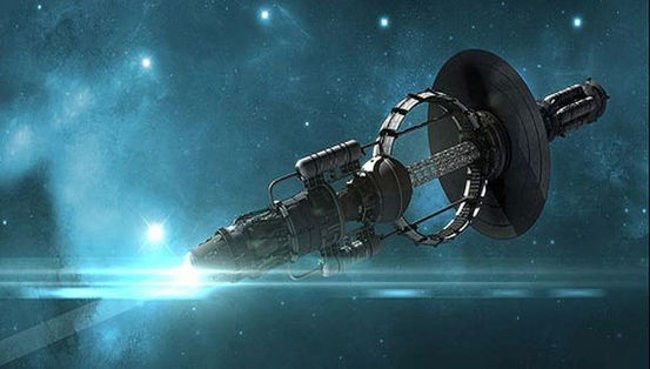 |
| Antimatter would be a great rocket fuel because of its very high energy density. (Image credit: Adrian Mann). |
In addition to light sails, giant lasers, and fusion rockets, there are some "exotic" options for interstellar travel that have been proposed, such as rockets powered by extremely violent (and incredibly efficient) annihilation reactions of matter and antimatter.
"Antimatter would be a great rocket fuel because of its very high energy density," Crawford said. "But of course it doesn't exist in nature, we have to create it. It's not only very difficult, expensive, and dangerous to create – so it could be used as a rocket fuel."
Another proposal for using exotic physics to control spacecraft is the “Schwarzschild Kugelblitz” maneuver – using a microscopic, artificial black hole containing an engine inside as its power source.
Above is an idea for a spacecraft called the "SK Drive" - intercepting Hawking radiation from the rapid, extremely violent decay of a tiny black hole and converting it into energy used to propel the spacecraft.
Each artificial black hole can only last for a few years, so new ones would be created on demand by compressing matter with gamma lasers.
According to a 2009 study, the SK-drive spacecraft, powered by a tiny black hole the mass of a modern oil tanker, could accelerate to 10% the speed of light in 20 days. Black holes can exist for as long as three and a half years before decaying completely, producing more than 160 petawatts (PW), or 160 quadrillion watts, of energy in their entire “lifetime.”
6. "Slow Train"
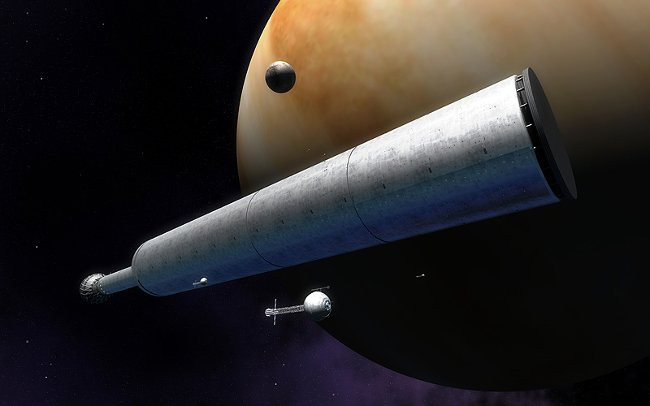 |
| Some ideas still linger in the concept of a “Slow Train” – perhaps one day to take humans to the stars. (Image source: Adrian Mann). |
Crawford added: "I think humans can explore planets more effectively than robots, there are cultural reasons for humans to explore space. Right now, it's true that it works very well at interstellar ranges - it's just that the distances are so great and the technical difficulties are so great that this stage is almost incomprehensible."
Still, there are a number of ideas that linger in the concept of a "Slow Train" - one that might one day take humans to the stars, including:
Sleeper Ships, where crew members are kept in a state of "deep sleep" or "floating" during long journeys, have appeared in many science fiction films such as Stanley Kubrick's "2001: A Space Odyssey" made in 1969, Ridley Scott's "Alien" in 1979 and James Cameron's "Avatar" in 2009.
World Ships, also known as “generation ships” or “interstellar arks” – giant, enclosed vessels that can hold large numbers of humans and other species living on Earth. These ships make the journey to colonize “exotic” planets quite comfortable, but the journey can take centuries to complete. Generations of humans will live and die during the journey, and only their descendants will be able to reach their destination.
The Embryo spacecraft freezes human stem cells instead of "deep sleep" or maintaining human life to a distant planet - where they can "survive" and conduct research by a crew protected by robots.
7. Faster-than-light train
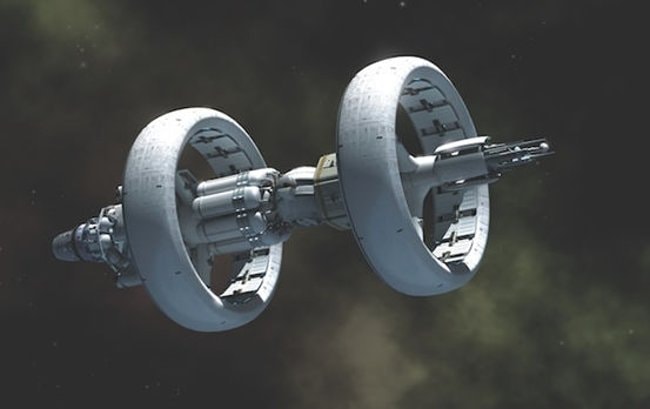 |
| The concept of a faster-than-light spacecraft remains a mystery. (Image source: Adrian Mann). |
Wherever astronomers have looked in the universe, the theory of relativity has held true. As Albert Einstein showed: "In space, it is impossible to accelerate a mass to the speed of light and then ignore it."
However, Einstein's equations may still hold some tricks for science, ending a process with known laws of physics and launching travel at faster-than-light (FTL) speeds - the Holy Grail for generations of science fans.
The most famous scientific concept of FLT travel is the Alcubierre drive, proposed by theoretical physicist Miguel Alcubierre in 1994.
The proposed engines would work by using the intense gravitational force, created by two rotating rings of exotic dense matter, to physically shrink the space in front of the spacecraft, while expanding the space behind it, at speeds that could surpass the speed of light.
Alcubierre's proposal required that there be a kind of exotic matter about the rings that was not known to exist, the spacecraft located inside the "bubble" created by the engine would never go faster than light in its own space, so would not violate the laws of relativity.
Other speculative ideas for FTL travel include using wormholes—which theoretically don't exist—to reach the middle of an entangled space-time zone, or risking going through the edges of a large, rotating black hole, as depicted in Christopher Nolan's 2014 film "Interstellar."
But Professor Crawford also notes that: "The concept of a faster-than-light spacecraft is still full of unknowns and contradictions that clearly violate the principle of causality - every situation is created by other situations that happened in time and have nothing to do with it. So it is like a proposal that cannot be proven, even if it is technically feasible."
"I don't want to sound too pessimistic, because I can see the huge benefits that humans would get from traveling to the stars, but physics is physics and it's really difficult," Crawford said.
According to Khoahoc.tv
| RELATED NEWS |
|---|

